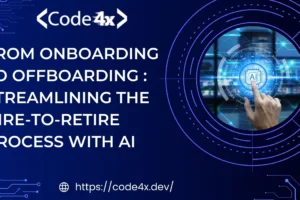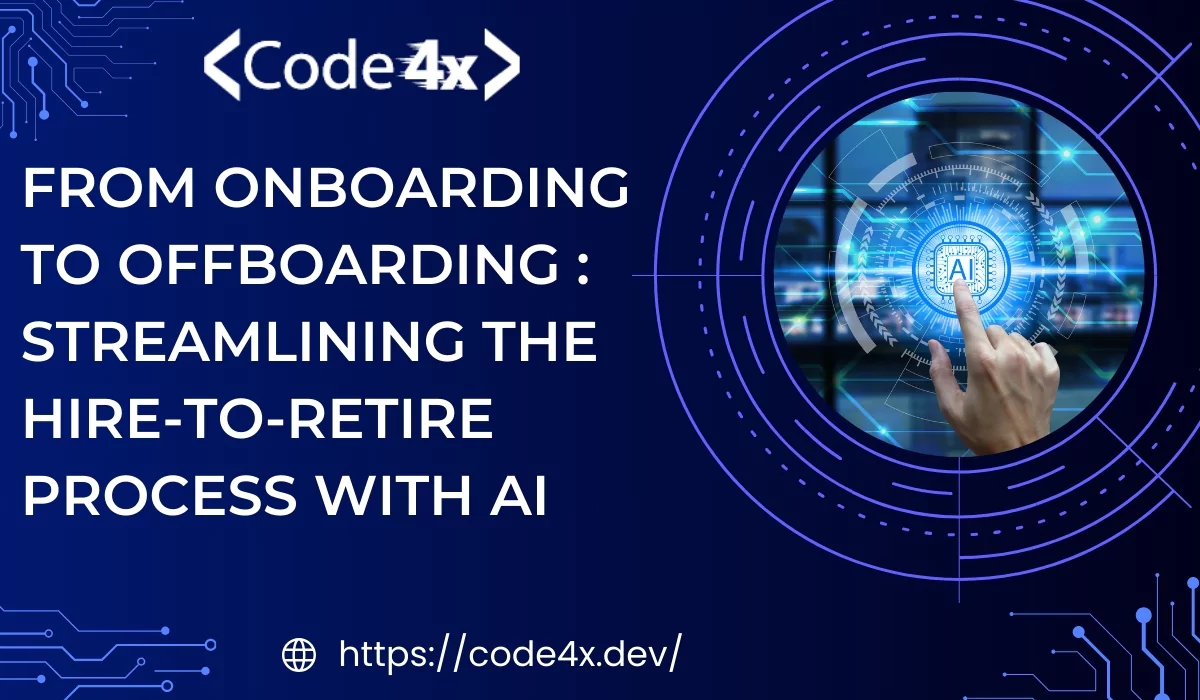
From Onboarding to Offboarding: Streamlining the Hire-to-Retire Process with AI
The employee lifecycle, from the moment someone is hired to their eventual retirement, involves a complex web of processes. Traditionally, these processes have been laden with paperwork, manual tasks, and potential for human error. However, the advent of generative AI is revolutionizing how businesses manage the hire-to-retire cycle, offering unprecedented efficiency, personalization, and strategic insights.
Onboarding Reimagined
Imagine new hires stepping into a role with a personalized onboarding experience tailored to their specific needs and learning styles. Generative AI can make this a reality:
- AI-Powered Learning: Instead of generic training manuals, AI can create interactive learning modules, customized to the employee’s role, skills, and even preferred learning pace. Imagine AI-generated simulations for sales representatives to practice customer interactions or coding challenges for software engineers.
- Automated Paperwork: No more endless forms! AI can automate the completion and processing of onboarding documents, ensuring accuracy and freeing up HR’s time for more strategic tasks.
- Virtual Assistants: AI-powered chatbots can answer new hires’ questions instantly, providing 24/7 support and reducing the burden on HR staff.
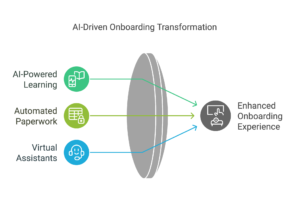
Performance Management Enhanced
Generative AI can transform performance management from an annual chore to a continuous, data-driven process:
- Real-time Feedback: AI can analyze employee performance data from various sources, like project management tools and communication platforms, to provide real-time feedback and identify areas for improvement.
- Personalized Development Plans: Based on performance data and employee aspirations, AI can generate personalized development plans, recommending relevant courses, mentorship programs, or stretch assignments.
- Bias-Free Evaluations: AI can help mitigate bias in performance reviews by analyzing data objectively and providing insights based on concrete evidence.
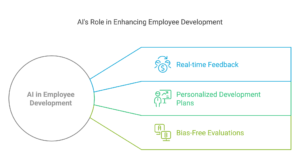
Offboarding Made Seamless
Even the offboarding process can be streamlined and improved with AI:
- Automated Knowledge Transfer: AI can help capture and transfer valuable knowledge from departing employees. Imagine an AI tool that analyzes their work, identifies key information, and creates knowledge resources for their successors.
- Exit Interview Analysis: AI can analyze exit interview feedback, identifying patterns and trends that provide valuable insights into employee satisfaction, potential retention issues, and areas for organizational improvement.
- Compliance and Documentation: AI can ensure all offboarding procedures comply with legal and company regulations, automating document generation and workflows.
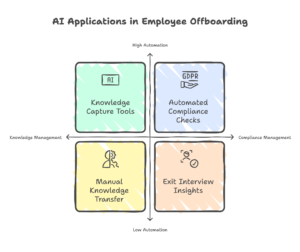
Strategic HR with Generative AI
Beyond operational efficiencies, generative AI empowers HR departments to become more strategic:
- Predictive Analytics: AI can analyze historical data to predict future workforce needs, allowing HR to proactively plan for talent acquisition, training, and succession planning.
- Talent Acquisition: AI can help identify and recruit the best candidates by analyzing resumes, online profiles, and even social media activity, matching skills and experience to job requirements.
- Personalized Employee Experiences: AI can help create personalized experiences for employees throughout their lifecycle, from customized onboarding programs to tailored development opportunities, leading to increased engagement and retention.
Real-World Examples
IBM:
- Predicting Attrition: IBM uses AI to analyze a vast amount of employee data, including performance reviews, salary information, internal communications, and even social media sentiment, to identify patterns that predict employee attrition.1 This allows them to proactively address potential issues, such as offering targeted training, development opportunities, or even adjusting compensation packages to retain valuable employees.
- Validation: IBM has publicly discussed their use of AI for predicting employee attrition. A study by IBM showed that their AI model could predict employee departure with 95% accuracy. This predictive capability helps them save millions of dollars in turnover costs. You can find more information on IBM’s AI solutions for HR on their website and in various case studies.
Unilever:
- Removing Bias in Hiring: Unilever employs AI to analyze candidate profiles, focusing on skills and experience rather than demographic information.2 This helps them identify the best candidates while minimizing unconscious bias in the hiring process. They also use AI to assess candidates through games and simulations, ensuring a fairer and more objective evaluation.
- Validation: Unilever has been very public about their AI-powered hiring process. They’ve reported a significant increase in diversity among their hires since implementing these AI tools. Articles and case studies on Unilever’s approach are readily available online, highlighting their commitment to diversity and inclusion through AI.
PwC:
- AI-Powered Chatbots: PwC utilizes AI-powered chatbots to handle a wide range of employee queries, from HR policies and benefits information to IT support requests.3 These chatbots are available 24/7, providing instant support and freeing up HR staff to focus on more strategic initiatives.
- Validation: PwC has implemented AI chatbots across various departments, including HR. They have reported increased employee satisfaction and significant time savings for HR personnel. You can find information on PwC’s use of AI in HR on their website and in industry publications. They also have resources discussing the broader impact of AI on the workforce.
These examples demonstrate how leading companies are leveraging generative AI to transform their HR processes, from talent acquisition and onboarding to performance management and offboarding. By embracing these technologies, businesses can create a more efficient, engaging, and rewarding experience for their employees.
Generative AI Tools for HR: A Powerful Arsenal
The market is brimming with generative AI tools that can potentially revolutionize HR processes. Here are some examples that illustrate their diverse capabilities:
Large Language Models (LLMs) like ChatGPT, Google Gemini, Anthropic Claude:
These powerful AI tools, including ChatGPT, Google’s Bard, and others, can be utilized in a multitude of ways within HR:
- Content Creation: Generate engaging and informative HR content, such as employee handbooks, training materials, and even personalized onboarding messages.
- Drafting Communications: Compose clear and concise emails, announcements, and performance reviews, saving time and ensuring consistency.
- Answering Employee Queries: Provide instant responses to common HR questions through AI-powered chatbots, improving employee satisfaction and freeing up HR staff.
- Summarizing Information: Condense lengthy documents, like performance reviews or policy updates, into easily digestible summaries.
- Translating Languages: Facilitate communication with a global workforce by translating HR documents and messages into different languages.
How LLMs help:
- Increased efficiency: Automates content creation and communication tasks.
- Improved communication: Ensures clarity, consistency, and accessibility of information.
- Enhanced employee experience: Provides instant support and personalized communication.
- Reduced workload: Frees up HR professionals to focus on strategic initiatives.
By integrating these LLMs with other specialized AI tools, HR departments can create a truly comprehensive and powerful system for managing the entire employee lifecycle.
Conclusion
Generative AI is transforming the hire-to-retire process, creating efficiencies, improving decision-making, and enabling HR to focus on strategic initiatives. By embracing this technology, businesses can create a more engaging, personalized, and ultimately more successful employee experience.



